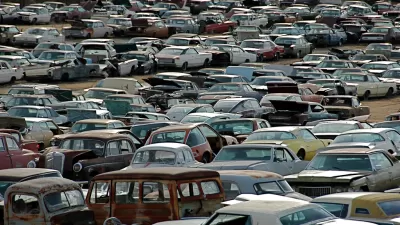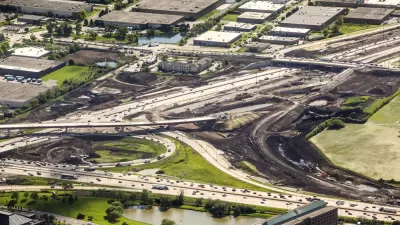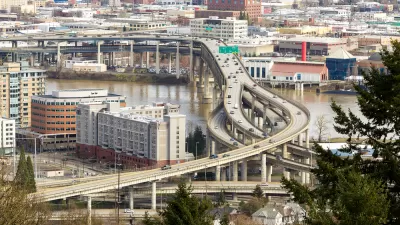The trend toward less driving received national attention in May with the release of a report by US Public Interest Research Group (PIRG), and the news has profound implications for both urbanism and transportation.

"The trend toward less driving received national attention in May with the release of a report by US Public Interest Research Group (PIRG), and the news has profound implications for both urbanism and transportation," writes Robert Steuteville.
"Total US driving dipped and then leveled off in recent years, and per capita vehicle miles traveled (VMT) has steadily dropped since 2005 — 93 months. Per capita driving is down 8.75 percent, and is now at 1996 levels. The decline has no end in sight. The turnabout wouldn’t seem so remarkable if it hadn’t followed six decades of steady and substantial rises in VMT fueled by cheap gasoline, highway construction, suburban development, and women entering the workforce."
FULL STORY: The ‘driving boom’ is over

Study: Maui’s Plan to Convert Vacation Rentals to Long-Term Housing Could Cause Nearly $1 Billion Economic Loss
The plan would reduce visitor accommodation by 25,% resulting in 1,900 jobs lost.

Placekeeping: Setting a New Precedent for City Planners
How a preservation-based approach to redevelopment and urban design can prevent displacement and honor legacy communities.

Using Old Oil and Gas Wells for Green Energy Storage
Penn State researchers have found that repurposing abandoned oil and gas wells for geothermal-assisted compressed-air energy storage can boost efficiency, reduce environmental risks, and support clean energy and job transitions.

Washington State Plans Ambitious ‘Cycle Highway’ Network
The state is directing funding to close gaps in its existing bike network and make long-distance trips more accessible.

Homeowners Blame PG&E for Delays in ADU Permits
The utility says it has dramatically reduced its backlog, but applicants say they still face months-long delays for approvals for new electrical work.

Rethinking Wildfire Defense: How a Landscape Approach Can Protect Neighborhoods
Post-fire analysis of the Eaton Fire reveals that a landscape approach — including fire-resistant vegetation, home hardening, and strategic planning — can help reduce wildfire risk, challenging assumptions that trees and plants are primary fire hazards.
Urban Design for Planners 1: Software Tools
This six-course series explores essential urban design concepts using open source software and equips planners with the tools they need to participate fully in the urban design process.
Planning for Universal Design
Learn the tools for implementing Universal Design in planning regulations.
Borough of Carlisle
Caltrans
Heyer Gruel & Associates PA
Institute for Housing and Urban Development Studies (IHS)
City of Grandview
Harvard GSD Executive Education
Salt Lake City
NYU Wagner Graduate School of Public Service
City of Cambridge, Maryland





























